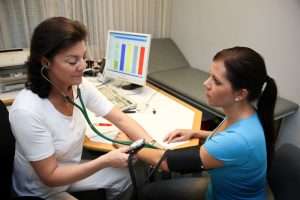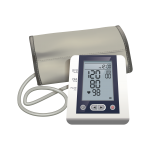Blood Pressure Mistakes
This blog post is a companion piece to my earlier blog where I went over the new Blood Pressure Guidelines that the American Heart Association, and 10 other organizations released in 2017. Those guidelines changed who is now classified as having “High Blood Pressure” and who needs medication and/or hospitalization.
In this post I will give you some pointers on how we can make sure that whoever takes our Blood Pressure reading gets it right. There are some very specific blood pressure mistakes that everyone, including the nurses and doctors who take the readings, have been making for years that can easily cause those readings to be high!
The Measurement Mistakes
Let’s talk about making sure that you get the most accurate reading to get the best treatment, which hopefully would be no treatment…
This list of “measurement mistakes” is from the American Heart Association who says that any one of them can lead to an artificially high reading.
There are 7 blood pressure mistakes that they published on their website in April 2018. I didn’t know about any of these before reading their news release, did you?
Mistake #1
Having a full bladder. According to the AHA it can add 10-15 points to your reading. Remember to stop at the rest room on your way in to see the doctor or if you are taking your BP reading yourself at home.
Mistake #2
Poor back support when sitting which can increase your reading by 6-10 points. Make sure you don’t slouch, that your back is supported, and your feet are flat on the floor or on a footstool.
Mistake #3
Having the arm with the cuff on it unsupported. If your arm is hanging by your side or you have to hold it up while someone else puts the cuff on and does the reading it can add up to 10 points to the reading. They suggest that cuff be positioned level with your heart and that you prop your arm on a chair or counter or whatever else is around.
Mistake #4
Wrapping the cuff over clothing. Put the cuff on your bare arm. If you don’t it can add anywhere from 5 to 50 points to the reading which is huge.
Mistake #5
Having the cuff be too small. I think that this would usually apply to people who are taking their reading themselves but you never know. They suggest that you have your healthcare provider check out your cuff for you.
Mistake #6
Sitting with your legs crossed which can add 2-8 points. This goes along with number two which is having both feet supported on the ground which would, of course, stop one from crossing one’s legs.
Mistake #7
Do not talk – stay still, stay silent, and breathe normally. Talking, which includes talking on the phone, answering questions, or having a conversation with the nurse, can add 10 points to your reading.
The American Heart Association makes sure to say that these mistakes aren’t what they call “additive”. Additive means that if you make 3 of the mistakes, each of which could add 10 points to your reading, that you would only be at risk of adding a total of 10 points to your reading not 30.
How the Professionals Did…
I found it very interesting that the April post on the AHA site talked about a high blood pressure symposium where they asked a group of attendees to take their most accurate blood pressure readings. All of the people taking the readings were current healthcare professionals and/or clinicians.
Turns out that of the 30 readers tested only 3 passed. The Chair of the symposium was quoted as saying that “This suggests we must better educate our clinicians and healthcare professionals regarding the proper techniques to accurately measure blood pressure.” I would agree.
Blood Pressure At Home
There are a couple more things that you are suggested to do / not do if you are taking your own blood pressure at home:
- Don’t smoke, consume caffeine, or exercise within 30 minutes of taking your BP
- Do it shortly before taking your anti-hypertensive medication (assuming you are on this medication)
- Measure your BP at the same time every day
- Don’t measure it when you’re feeling stressed or anxious
- Take 2 measurements 5 minutes apart and then take an average of the two
Wrap Up
I hope that the information in this post will help you get the most accurate blood pressure readings going forward. Be sure to share this info with your family and friends, and not just those who have Blood Pressure issues – knowing some of these mistakes could mean the difference between ending up on long term medication you don’t need or not getting some of the help you do.
And if you haven’t already listened to my podcast about Blood Pressure be sure to do it now!
